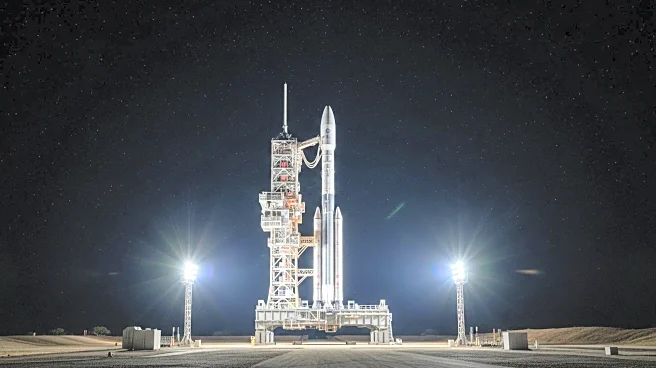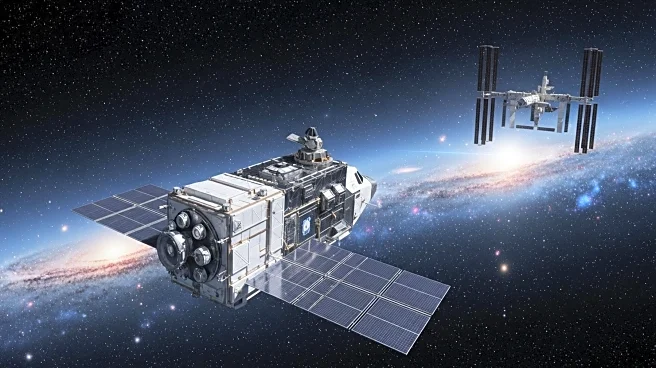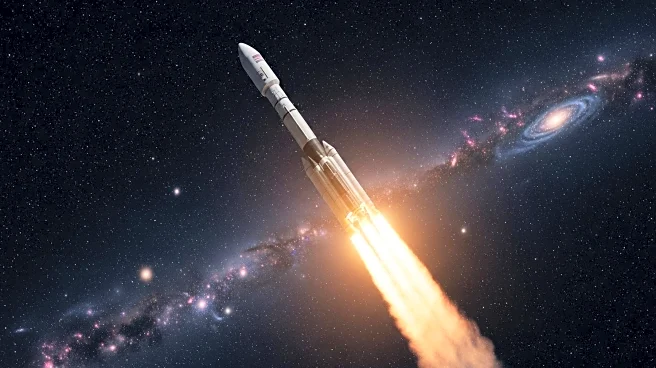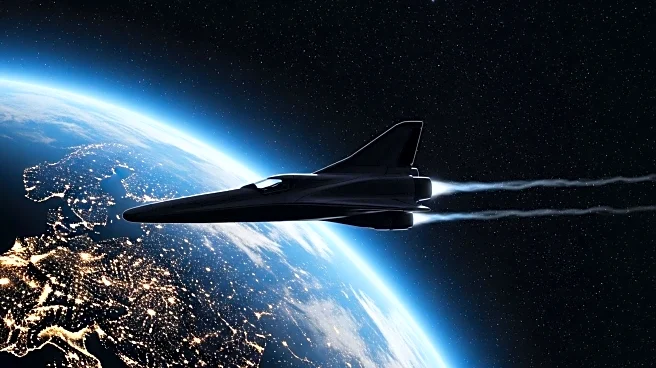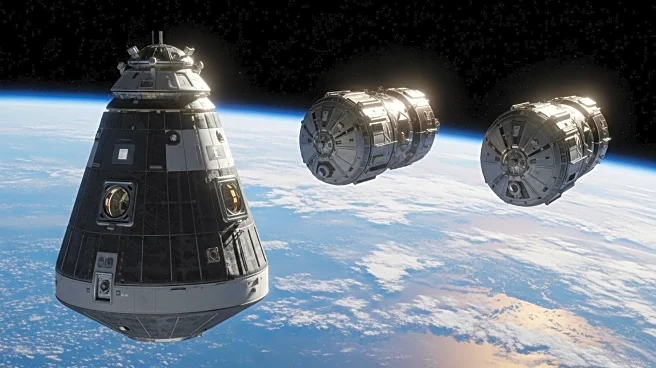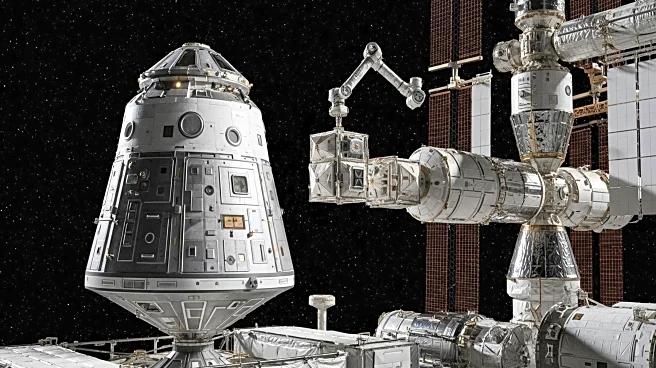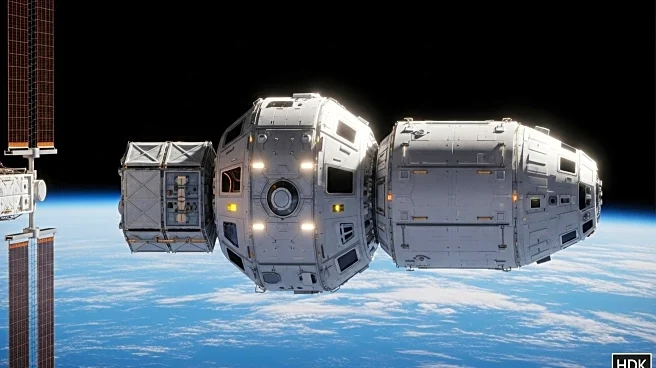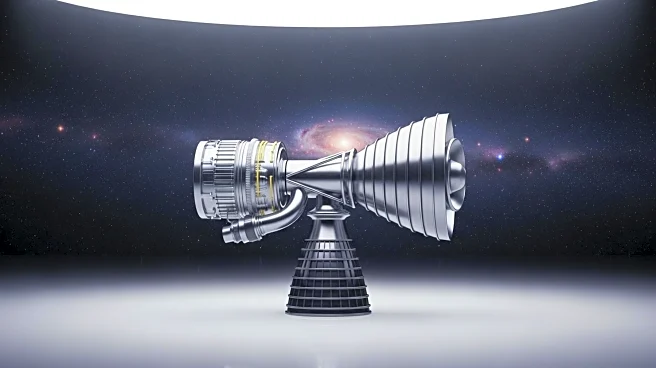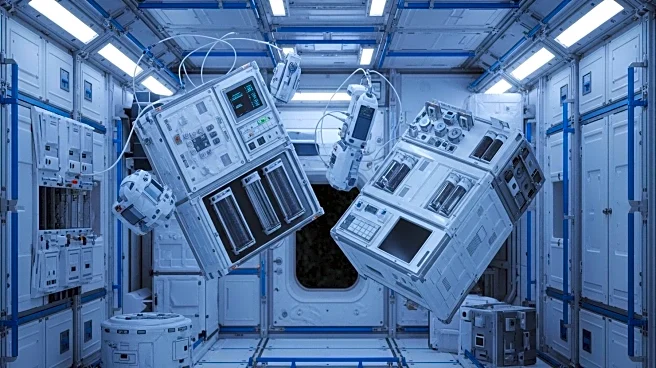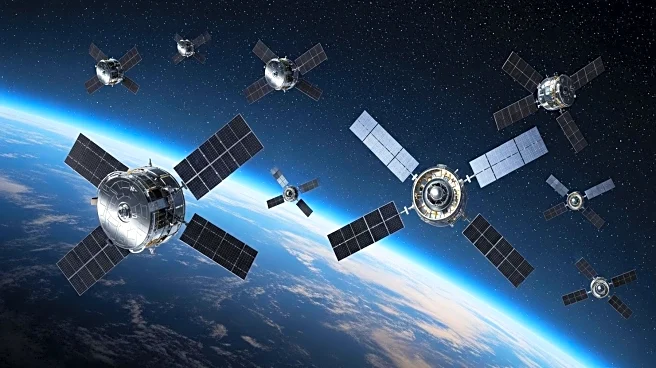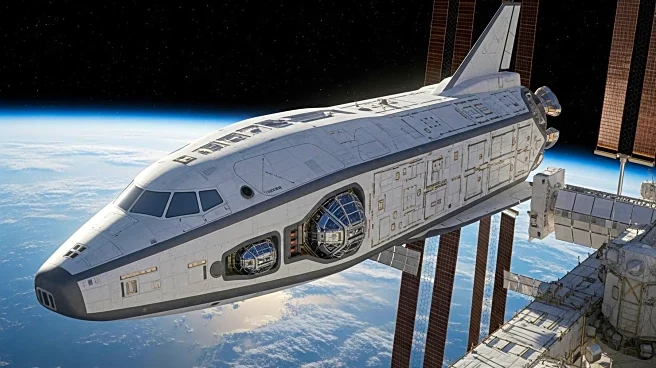What is the story about?
What's Happening?
NASA, in collaboration with Northrop Grumman and SpaceX, is set to launch the Northrop Grumman CRS-23 mission to the International Space Station. Scheduled for September 14, the mission will deliver over 11,000 pounds of supplies, including materials for semiconductor crystal production and equipment for cryogenic fuel tank improvements. The Cygnus XL spacecraft, carried by a SpaceX Falcon 9 rocket, will also transport a UV light system to prevent microbial growth in water systems and supplies for pharmaceutical crystal production. The spacecraft will be captured by the space station's Canadarm2 and installed for cargo unloading.
Why It's Important?
This mission is significant for advancing scientific research and technology demonstrations aboard the International Space Station. The delivery of semiconductor materials and cryogenic equipment could lead to breakthroughs in space-based manufacturing and fuel storage technologies. Additionally, the UV light system and pharmaceutical supplies have the potential to improve health and safety standards in space, contributing to long-term human habitation and exploration. The mission underscores the importance of international collaboration in space exploration, with NASA, Northrop Grumman, and SpaceX working together to enhance scientific capabilities.
What's Next?
Following the launch, the Cygnus XL spacecraft will remain at the space station until March, allowing for extensive research and experimentation. The results of these investigations could inform future missions and technological developments, particularly in the fields of materials science and pharmaceuticals. The successful completion of this mission may lead to further collaborations between NASA and private companies, expanding the scope of commercial resupply services and scientific research in space.
Beyond the Headlines
The naming of the Cygnus XL spacecraft as the S.S. William 'Willie' McCool honors the legacy of the NASA astronaut who died in the Columbia accident, highlighting the human element and sacrifices involved in space exploration. This mission also reflects the growing role of private companies in supporting NASA's objectives, demonstrating the shift towards commercial partnerships in space missions. The advancements in semiconductor and pharmaceutical technologies could have long-term implications for industries on Earth, potentially leading to new products and treatments.
AI Generated Content
Do you find this article useful?
